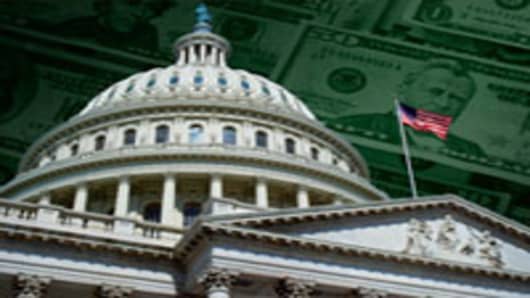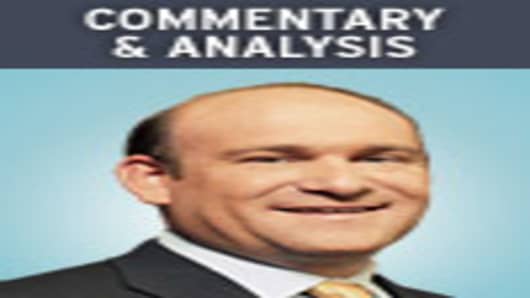A formula seems to be taking shape around which budget negotiators could agree to a package that would both raise the debt ceiling and cut the deficit.
The ratio of $3 of spending cuts for every $1 of revenue increases came up repeatedly at a roundtable of lawmakers and budget experts yesterday sponsored by the Center for a Responsible Federal Budget.
Sen. Michael Bennet, (D-Colo.), said it was a ratio that he thought his state — one-third each Republican, Democratic and Independent — could embrace.
I moderated the panel of 40 and turned to Rep. Paul Ryan (R-Wis.), chairman of the House Budget Committee, and asked him if he would sign up for such a deal. Ryan said, “Let’s see the package.”
Bennet, a member of the gang of five currently negotiating the package, responded that even that answer represented progress since it was not immediately dismissed by Ryan. (Earlier, Ryan had insisted the Democrats had to put Medicare on the table.)
Are we nearing a point of compromise?
From the tenor of the discussions in the room Tuesday, it sounded as if we are. A poll of the roundtable members showed a majority believe Congress will reach a deal to raise the debt ceiling before Aug. 2, although most believe it will be a short-term agreement that does not solve the problem through the 2012 elections.
What’s useful is that there is already something of a road map. While many have bemoaned that last year's Simpson/Bowles deficit commission recommendations were ignored, in fact, the 3-to-1 ratio comes straight from their report.
It works out to a total of $4 trillion in deficit reduction: $2 trillion in spending cuts and $1 trillion in revenue increases. The other $1 trillion comes from the decline in interest payments over 10 years from reducing the deficit by $3 trillion.
The $1 trillion in revenue is not supposed to be a simple tax increase. The Simpson/Bowles commission recommended a huge cut in tax exemptions and deductions. A big enough elimination of so-called tax expenditures should raise enough money to lower income tax rates and leave some left over to pay down the debt. This, of course, involves a major tax overhaul and is a direct assault on special interest lobbies.
The spending cut exercise will be equally brutal.
Ryan said "let's see the package," but he also gave us a clue about what needs to be in it: "You just can't fix this problem if you don't deal with our healthcare entitlements. And not dealing with our healthcare entitlements means that you're not fixing the problem. So if you fix the healthcare entitlements, I think that is a huge step in the right direction that brings people like me along."
It will ignite a firestorm in Washington.
And Gene Sperling—a top Obama economic adviser who is involved in the talks by the bipartisan deficit-cutting negotiators known as the "Gang of Five"—said he has "yet to receive the email" telling him that Republicans have signed on to revenue increases.
But it’s not a stretch to think any final deal will look something like the three-to-one ratio. If there’s going to be a deal, it will overwhelmingly involve spending cuts. But it seems inconceivable that some form of higher revenue won’t be part of it.
What will make lawmakers finally see the light on the need for compromise?
Eugene Steuerle, co director of the Urban-Brookings Tax Policy Center, compared it to the vote on TARP, the $700 billion bank bailout fund that lawmakers passed after seeing the market plunge 700 points following the program’s initial failure in Congress.
“They will have to believe it is much worse for them not to do a deal than to do one,” he Steuerle said.




